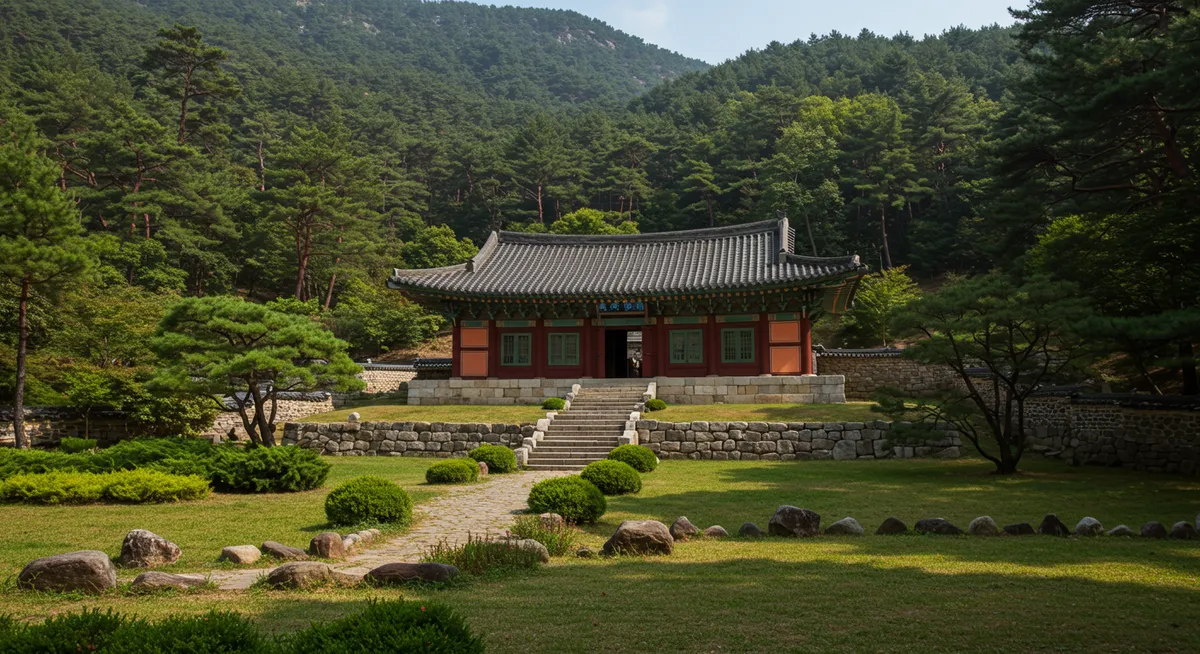When to Plan Your Trip to Gyeongju: A Seasonal Overview
Having explored South Korea extensively, including multiple visits to its historic heart, Gyeongju, I can confidently say that timing truly enhances your experience. This ancient Silla kingdom capital is a living museum, boasting UNESCO World Heritage sites and breathtaking natural beauty. Knowing the best time to visit Gyeongju can transform your trip from good to unforgettable, especially when considering its vibrant cherry blossom season or the stunning autumn foliage. Discover the best local cuisine with our Gyeongju food guide. Enhance your Gyeongju experience with our Gyeongju itinerary.
Spring (April-May): Cherry Blossoms & Mild Weather
Plan this trip faster with our free online itinerary maker. Get a personalized day-by-day plan in minutes.
Undoubtedly, spring offers the best time to visit Gyeongju, especially for those chasing the iconic cherry blossoms. Typically peaking in early to mid-April, the city transforms into a floral wonderland, particularly around Bomun Lake and Bulguksa Temple. The weather is delightfully mild, perfect for exploring outdoor historical sites like Tumuli Park and Cheomseongdae. My personal tip: book accommodations well in advance as this is peak season, and consider renting a bike around Bomun Lake for a truly immersive experience. The pleasant temperatures also make it ideal for tackling a comprehensive Gyeongju itinerary, ensuring you see all the major sights. Build your perfect itinerary with our Gyeongju itinerary.
Summer (June-August): Festivals & Warmth
Summer in Gyeongju brings warmer temperatures and higher humidity, but it’s also a season packed with cultural events and lively festivals. While it might not always be the absolute best time to visit Gyeongju for comfort, it’s fantastic for those who enjoy bustling atmospheres. You can often find traditional performances and nighttime activities around the city's historical parks. Despite the heat, the lush greenery provides a beautiful backdrop, and many attractions offer shaded areas. If you're planning a Gyeongju 2-day itinerary, factor in early morning starts to beat the midday sun and enjoy the pleasant evenings. Enhance your Gyeongju experience with our Gyeongju itinerary.
Autumn (September-November): Vibrant Foliage & Ideal Conditions
Autumn rivals spring as the best time to visit Gyeongju, offering a spectacular display of fall foliage and wonderfully crisp weather. From late September through early November, the hillsides and ancient sites are awash in brilliant reds, oranges, and yellows. This season provides perfect conditions for extensive walking tours and photography, with comfortable temperatures making exploration a joy. Key spots like Bulguksa Temple and Namsan Mountain become even more picturesque. From my own travels, I've found that autumn's clear skies truly highlight the architectural grandeur of the Gyeongju must-see attractions, creating an unforgettable visual feast for visitors.
Winter (December-March): Tranquil & Less Crowded
While less popular than spring or autumn, winter can also be a good time to visit Gyeongju, especially for travelers seeking tranquility and fewer crowds. The temperatures drop significantly, and there's a chance of snow, which lends a quiet, ethereal beauty to the ancient temples and royal tombs. Many outdoor sites remain accessible, offering a unique, stark beauty. You'll find lower prices for accommodation and a more serene atmosphere for reflection. For those traveling from Seoul, understanding how to get from Seoul to Gyeongju is crucial, and winter travel might require considering warmer clothing for the journey and exploring the city.
Frequently Asked Questions
What months are best for Gyeongju's cherry blossoms?
Is Gyeongju very hot in summer?
When is the best time to avoid crowds in Gyeongju?
Choosing the best time to visit Gyeongju ultimately depends on your preferences for weather, crowd levels, and scenic beauty. Spring and autumn offer the most pleasant climates and stunning natural backdrops of cherry blossoms or vibrant foliage. Summer brings lively festivals despite the warmth, while winter provides a tranquil, less crowded experience. Regardless of when you choose to explore, Gyeongju’s rich history and serene landscapes promise an enriching journey. Start planning your trip today to discover the timeless allure of South Korea's ancient capital! Get deeper into silla via Gyeongju travel tips.
